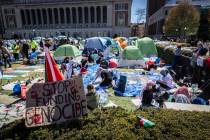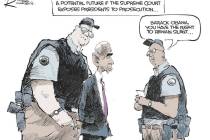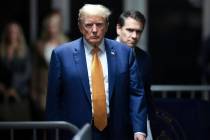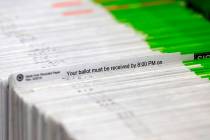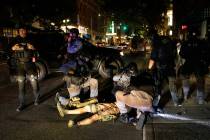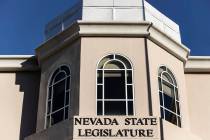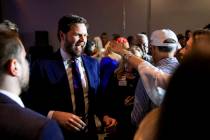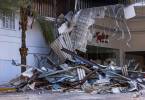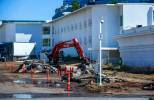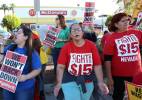Foul ball down the line
Kathleen Turner, 54, was eating a sandwich in the beer garden near the left field foul line at Cashman Field during a Las Vegas 51s game back in the spring of 2002 when she was struck in the face by a foul ball, breaking her nose and cutting her face. The injuries required reconstructive facial surgery.
That must have hurt; no one should make light of the lady's misfortune.
But the question that now presents itself, as the ensuing court case reaches the Nevada Supreme Court, is whether Mandalay Sports Entertainment, the operator of Cashman Field, should be held financially responsible for Ms. Turner's injuries and medical costs.
Lawyers say the Nevada Supreme Court, which heard the case Wednesday in Las Vegas, has never ruled on the protection of fans at baseball games. But courts in other jurisdictions have limited the liability of stadium operators in foul ball cases.
The grounds are obvious. Those attending baseball games -- adults or the adult guardians of accompanied children -- can be presumed to know that baseballs are potentially dangerous missiles when pitched, when thrown from the outfield or when batted. It's not as though such events are incidental and unexpected; those in attendance have paid specifically to see such events transpire, hundreds of times in the period of a couple of hours.
Furthermore, in this day and age, they could easily have stayed home and watched such contests on TV; instead, they've paid specifically for the sights and smells and sounds of being there in the flesh.
As at most other ballparks, the operators of Cashman Field have placed nets and screens behind home plate, generally acknowledged to be the area where fast-moving balls are most likely to otherwise escape into the stands. What would be "safe enough"? To completely separate the players from the fans with a Plexiglass dome? At that point, with the immediacy of the experience removed -- without the possibility that a kid scrambling in the stands might catch his or her own foul ball -- why not just shut down the stands and settle for broadcasting the whole event on antiseptic, closed-circuit TV?
Attorney Felicia Galati, representing the stadium operators, said in a pre-hearing brief that "baseball parks do not owe a duty to provide screening ... in viewing areas except in the most dangerous areas of the park, which is behind home plate."
She urged the Supreme Court to uphold District Judge Jessie E. Walsh, who issued a pretrial ruling in favor of Mandalay Sports.
Plaintiffs will insist that the "beer garden" seating arrangement is unusual, in that it's placed so close to the foul line, with fan seating not necessarily oriented to directly face the infield.
Should the courts really mandate -- in effect -- that all such seating options must be removed? When will the cocoon be safe enough -- when we're all sleeping in individual womblike pods, like something out of "The Matrix"?
In most such cases, what really transpires in these lawsuits is a legal battle over whose insurance coverage will pay. Should the court set a precedent by holding against the stadium operators, expect ticket prices to all live events to rise even more.
The incident was unfortunate. Sympathy is not out of place. But it's not the court's job to play Santa Claus -- to always require someone else to pay for what we used to call "accidents." Sometimes it's the court's job to say, "You knew you were going to a baseball game. After that guy says, 'Play ball,' and for as long as there's open space between you and the field, you're supposed to pay at least some attention to what's going on down there. Real-life events carry real-life risks."
To retain any freedoms, we must also retain some responsibility for our choices. Judge Walsh got this one right the first time.








